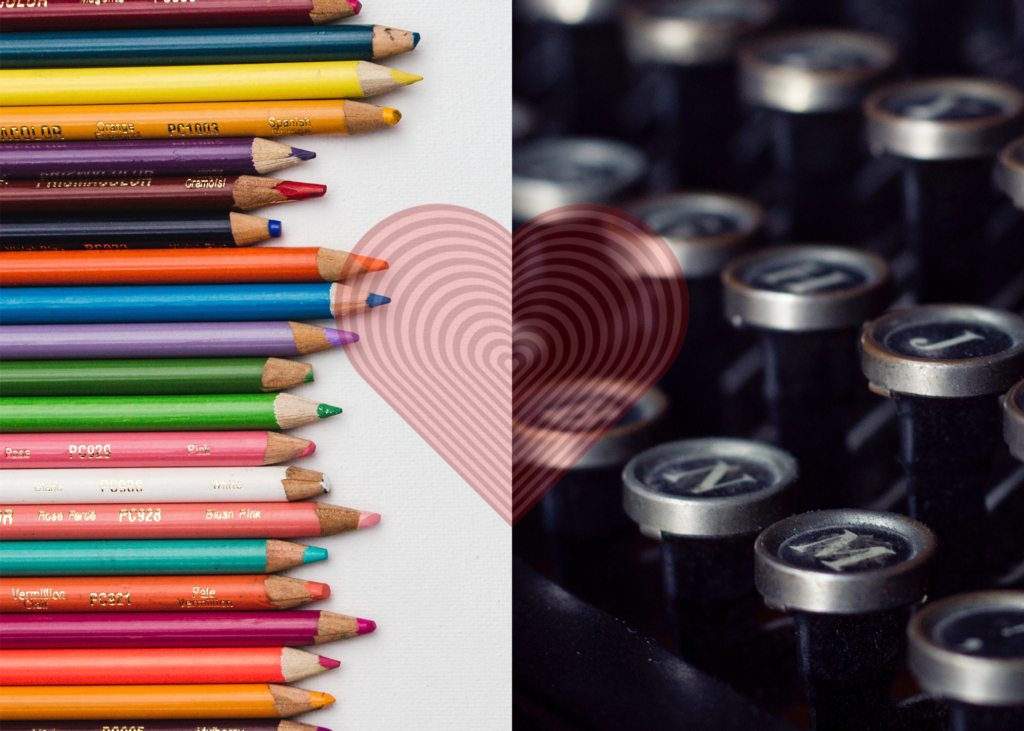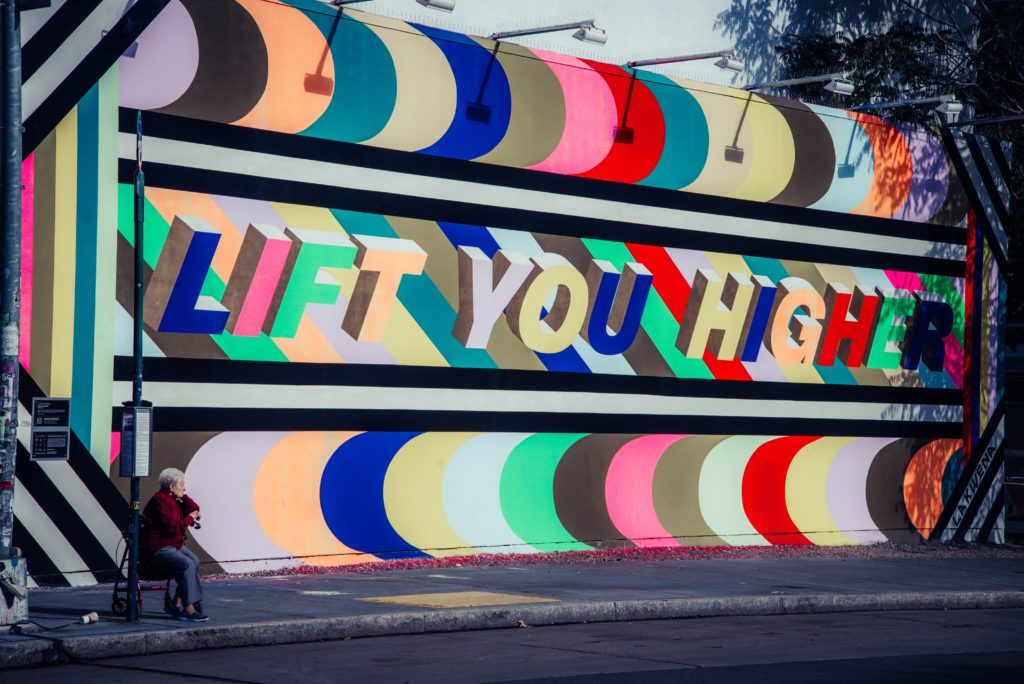Why your brand should align story and design
The strongest brands come to life at the intersection of story and design. The two exist symbiotically, reinforcing one another. When you effectively combine the two, it helps your brand stand out. To be clear, standing out doesn’t always mean you’re the loudest or the boldest. Sometimes standing out means you’re the most authentic version of yourself.
Design and story need each other to survive. Without visual support, words alone lack wonder. The 26 letters in the alphabet will only take you so far, no matter how poetically potent your story. Without a solid story to back it up, your visual identity will struggle to stand on its own or stick in the minds of your customers.
In this post, we provide five essential reasons both story and design play a vital role in the brand creation process, how they reinforce and inspire one another, and why the best ideas come to life when their powers combine.
Storytelling with design makes for clearer, more powerful stories
As your brand story comes into focus, take note of its key moments: the dramatic build up to a climax; a purposeful shift in point of view; moments of reflection; moments of excitement. These are all aspects that design can help bring to life.
Think about pacing, too. If your story feels like it. takes. forever. to. get. to. the. big. idea…ask your design team to weigh in. Better yet, think like a designer yourself. See if you can’t find a visual to convey the same idea that’s taking you a paragraph to get across.
Look for patterns in your content. Consider ways you could group ideas together. Could any passages pack a bigger punch with a visual aide? “Simplify, simplify,” Thoreau writes. “Simplify, then get some design input,” can be our version.
Storytelling with design helps your big idea stick
Our goal as storytellers, Adam Westbrook writes, is to “bring the audience to a profound understanding in the most memorable way.” In our branding projects, “profound understanding” often comes at the story’s climax, when the heavens part and your big idea is revealed for the world to see. If your audience takes away nothing else from your story, let it be this.
Infusing your story with visual elements is by far the most effective tool for searing big concepts into the minds of your audience.
For instance, if I were to use words alone to describe an idea like “security,” I’d argue that even the greatest communicators—with every word in the English language at their disposal—would fall short of the instant connection and memorable understanding created by an image of a lock and key.
Storytelling with design lays the groundwork for visual identity
At a certain point in every project, the baton gets passed from writer to designer. Or, more accurately, we run one last lap together before the baton is passed. Creating your story with a designer’s mindset makes the hand-off seamless.
By incorporating design principles and techniques into the story development itself, the design team is better positioned to take your work to the next level.
Stories and visual identities are so intrinsically linked, it’s hard to tell which came first.
Writing with a designer’s point of view will help you capture and amplify the core themes around which your story is based. These form the source materials used to create logos, choose fonts, and develop an organizing principle for a brand’s visual system.
Here’s a relevant example from the New Kind archives: Anchore, an innovative startup in the container security space. The Anchore brand story is centered around the concept of “stability in a fluid world.” It’s easy to see how this core theme, and the visuals it immediately conjures—waves, anchors, motion, ebb, and flow—gave our design team a lot to work with once their piece of the project began.
Take a look at the Anchore case story for more details about how a brand’s story can be powerfully woven throughout its visual identity.
Designing with story gives visual identities strong roots
Everyone wants a brand that’s unique, whether it’s a visual identity that is disrupting an industry, celebrating your customers, or inspiring a movement. You want a visual identity that’s authentic to who you are today and sets you up for where you’re headed tomorrow.
Here’s how to look at it: Visual identities are the simplest possible symbol of who you really are as an organization. They communicate in a nanosecond the emotion, voice, and purpose of your business. That’s a lot of pressure to put on one small symbol. But by designing your visual identity around a story, you’re allowing the space for those connotations to be built over time.
Think of a brand you admire. Now imagine their visual identity. Picture it in your head. What words come to mind? It’s likely that those words have nothing to do with the actual logo itself. These are brands that are built on story. Stories and visual identities that are so intrinsically linked, it’s hard to tell which came first.
When it comes to your visual identity, define what words you’d want your customers to associate with you. Think beyond generic words like trust, confidence, smart. Search for words in your story that are authentically you and spark visual imagination. For example, maybe you want your brand to be associated with the word healthy. That could work. But what about a word like nourish? Nourish has some life to it. It sparks an emotion and expands the visual imagination.
Designing with story creates visual identities that inspire internal teams
Brands with loyal followings aren’t built overnight. They’re built on the foundation of strong mission, vision, and values, then fully realized through how you look, sound, and act as a company over time.
Successful visual identities become a rallying symbol for your employees, turning them into brand ambassadors. Ambassadors are crucial for retaining and recruiting new talent to push your business into its next phase of growth. They also help nurture a culture that is rocket fuel for your team to do their best work.
When your internal team hears the brand story, they can imagine the visual identity. And vice versa. When visual identities are built on story, it gives your team the language they need to express what the brand is. It gives them one playbook to work from, which creates pride and alignment. It sends a message that you’re all in this together.
———
By now, we hope you appreciate how storytelling and design exist as two sides of the same creative coin. Neither exists in a vacuum. Each informs and inspires the other. Story inspiring visuals inspiring story inspiring visuals inspiring story—and on and on.
Wondering how we might put our collaborative approach to building powerful brands to work for your company? Drop us a line, and we’d be delighted to talk with you about a project you have in mind. Or check out some case stories of our recent projects for more examples of how we help tech brands tell their stories.

